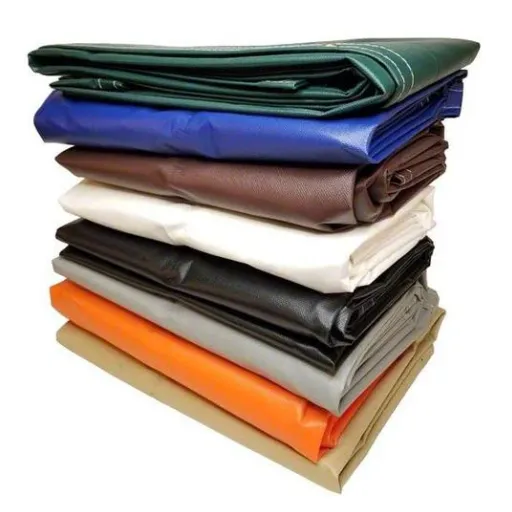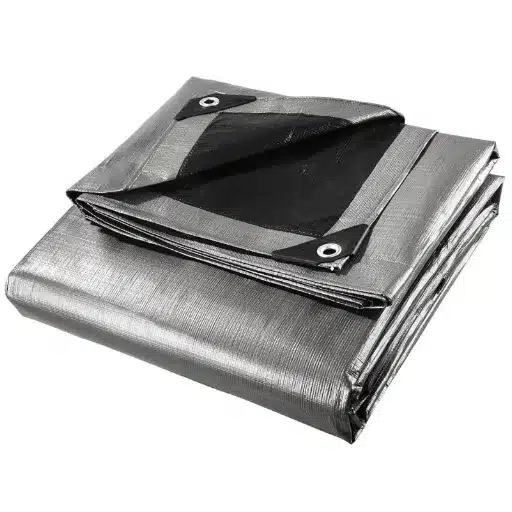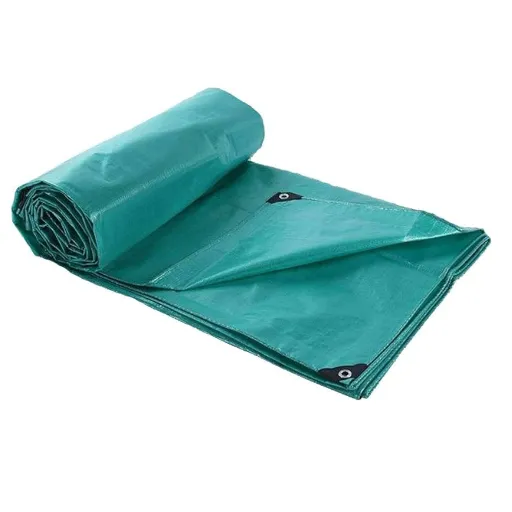When it comes to strength and versatility, a black tarp remains durable enough to serve a multitude of applications. Whether it is for heavy-duty outdoor equipment protection, acting as a reliable shield against fierce weather, or simply covering something for industrial purposes, heavy-duty black tarps will do. The blog delves into the qualities that set black tarps apart as a must-have, their ultimate durability, and what benefits they offer. Also, you shall learn how to choose the right heavy-duty tarp for your needs. Stay with us while we share everything to know about these hardworking tarps!
What is a Black Tarp?
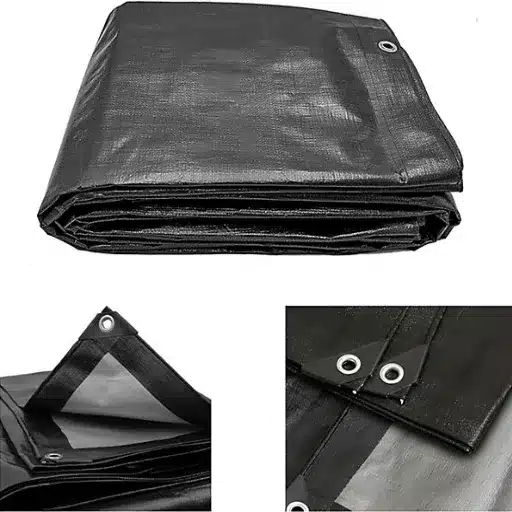
Definition and Premium on Tarps
Tarps are enormous sheets of strong, flexible, and durable waterproof material often made from vinyl, polyethylene, or canvas. Various forms of tarps help in protecting from environmental elements: rain, sunlight, dust, and wind. For outdoor and industrial purpose, these tarps are highly regarded for their ability to block sunlight and UV damage. From the latest search engine data, terms such as “heavy-duty tarp uses” and “best tarp for outdoor protection” come up with high ranks, therefore showing the need for such durable solutions from construction to agriculture and even around homes. Covering equipment, protecting vehicles, temporary shelters, etc., all must be done by tarps in one way or another.
Common Uses for Black Tarps
Black tarps offer a high degree of versatility in their wide range of uses due mainly to their durability and light-blocking properties. The latest set of data from the search engine have revealed many prevalent search queries among users are “black tarp for privacy” and “lightproof tarp solutions,” which in a way highlight their popularity in privacy screening and light blocking. In construction, they are used quite a lot in cases such as enclosing scaffolding or shielding building materials from harsh weather conditions. They are also perfect for agricultural uses like covering hay bales or providing shade for livestock. Additionally, black tarps are often used by homeowners in their various backyard projects: from blocking sunlight for gardens to erecting temporary outdoor shelters. Their light-absorbing quality makes them highly useful where controlled light or privacy is a must, giving them a diverse range of applications across different industries and common use.
Popular Applications Include:
- Construction: Enclosing scaffolding and shielding building materials
- Agriculture: Covering hay bales and providing livestock shade
- Residential: Backyard projects and temporary outdoor shelters
- Privacy: Light blocking and privacy screening
Difference Between Black and Other Colors
Black tarps stand apart from the other colors of tarps in four major areas, which all relate to functionality and particular uses. Black tarps absorb heat and sunlight well from the dark surface, making them a perfect option in applications where the focus is on UV protection, light absorption, or just mere privacy. All these make black tarps mostly useful in agricultural activities, covering equipment that needs sensitive handling, or constructing shaded areas.
Other-colored tarps serve many other purposes, like white tarps, for example, where diffused natural light is preferred, in greenhouses, or temporary shelters as the sunlight reflected, but a certain percentage of light also penetrates. Blue tarps, on the other hand, are mostly synonymous with construction or emergency repairs because they are highly visible and cheap. Clear tarps are, however, preferred in jobs where light transparency is required, such as shielding plants while ensuring visibility.
Choosing between black and colored tarps should always be based on the requirements of the particular activity at hand. If heat retention or blocking sunlight is involved in the project, then black tarps should do perfectly. However, for purposes of visibility, light diffusion, or aesthetic would most probably point toward colored tarps, depending on the exact nature of the application.
| Tarp Color | Primary Characteristics | Best Uses |
|---|---|---|
| Black | Heat absorption, UV protection, light blocking, privacy | Agriculture, equipment covering, shaded areas |
| White | Light reflection, diffused light, cooler surface | Greenhouses, temporary shelters |
| Blue | High visibility, cost-effective | Construction, emergency repairs |
| Clear | Light transparency, visibility | Plant protection, weather shielding with visibility |
Material and Construction of Black Tarps
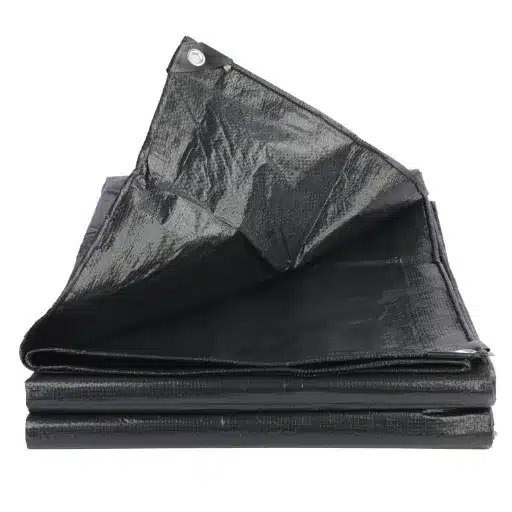
The Types of Materials Used in Heavy-Duty Black Tarps
Heavy-duty black tarps are manufactured using materials so robust that they would guarantee durability and serve different purposes efficiently. These commonly used materials include polyethylene, vinyl, and canvas. Polyethylene tarps are preferred for being lightweight, waterproof, tear-and-UV-resistant; thus, favorable for long outdoor usage. Vinyl tarps, which are thicker than the polyethylene ones, possess greater abrasion resistance and weather-proof qualities, suitable for industrial or heavy-duty works. The canvas tarps, treated for water resistance and mildewing, are somehow breathable for some specific duties like covering equipment and protecting some delicate surfaces. Each material category serves distinct purposes, enabling users to choose the best one for their par projects. From recent searches, it appears polyethylene remains the most favorite depending on its versatility and cost-effectiveness, with vinyl not far behind for heavy-duty uses.
Polyethylene
Properties: Lightweight, waterproof, tear-resistant, UV-resistant
Best For: Long outdoor usage, general purposes
Vinyl
Properties: Thicker, abrasion-resistant, weatherproof
Best For: Industrial, heavy-duty work
Canvas
Properties: Breathable, water-resistant, mildew-treated
Best For: Equipment covering, delicate surfaces
Advantages of Vinyl in Black Tarps
Vinyl black tarps stand tall for great resistances to choreography, temperature changes, and bruising from natural elements. According to search trends on ”s search engine, users often mention that vinyl tarps serve heavy-duty needs for industrial coverings, construction, and agricultural uses. Their abrasion resistance is on the peak, and finally, withstanding UV rays and water guarantees the long existence of these tarps under very contravening conditions. Furthermore, with the black color complementing the protection against UV and absorbing heat, it is great for uses that require keeping control in outdoor exposure over some period. Having the price to deliver in strength and versatility, vinyl black tarps now stand for all class heavy-duty tarp need with a hoisted solution.
✓ Key Advantages of Vinyl Black Tarps:
- Superior resistance to temperature changes
- Exceptional abrasion resistance
- Outstanding UV ray protection
- Waterproof under extreme conditions
- Extended lifespan in harsh environments
- Excellent strength-to-versatility ratio
Knowing Mil Thickness of Tarps
Mil thickness is a measurement unit used to specify the thickness of tarp material, making a precise indication as to its durability and strength. A “mil” is one-thousandth of an inch (0.001 inches), and the rating for tarps ranges typically from 5 mil to 30 mil or more, dependent on their function and price of quality. Of course, the thicker ones, anytime from 20 mil to 30 mil, are for heavy-duty applications like construction, industrial projects, or long-term outdoor cover. Thinner ones, such as 5-10 mil, are mostly for temporary or light-duty use: for example, keeping items safe from light precipitation or dust.
An understanding of mil thickness helps a user to select the right tarp for their own needs. For instance, tarps with high mil thickness resist tears, punctures, and both physical and weather attacks much better than most low mil ones that allow easy tear, lighter, and flexible for handling. Of course, when selecting any tarp, it is essential to weigh the attributes of the project; for example, the work environment, exposure time, and the level of protection needed to get optimum performance at cost.
| Mil Thickness Range | Durability Level | Recommended Applications |
|---|---|---|
| 5-10 mil | Light-duty | Temporary use, light precipitation protection, dust cover |
| 11-19 mil | Medium-duty | General outdoor use, equipment covering, moderate weather |
| 20-30+ mil | Heavy-duty | Construction, industrial projects, long-term outdoor cover |
Durability and Protection Features
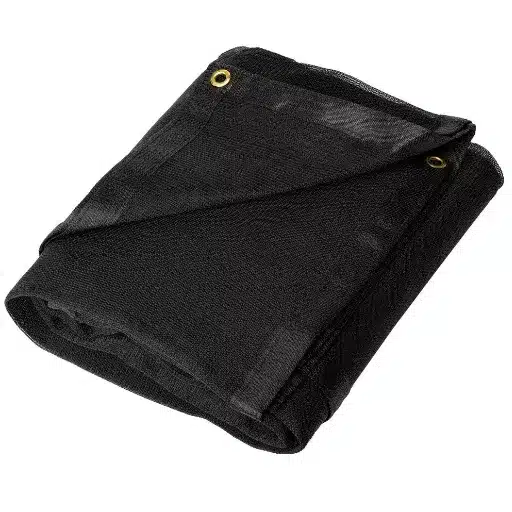
How Black Tarps Protect Against Weather Elements
Black tarps provide protection against weather elements. Since they are black, ultraviolet rays from the sun cannot penetrate, which prevents items underneath from degradation. Many of the black tarps are also made waterproof by design so that rain and even snow do not get their way through the tarp. In the process of being applied, heat-sealed seams provide additional waterproof capacity, while high-density polyethylene or vinyl coatings keep the tarp from being ripped off by strong winds.
Updated recent data underline the heating characteristics of black tarps for which are ideal in protecting objects in cold weather or temporary ground cover purposes in agriculture. Black tarps regulate the temperature of the materials covered herein to avoid damage related to temperature changes. Equipment, supplies, and crops can all be protected by black tarps with multilayered protection that resists environmental damage while still retaining useful characteristics in time.
Weather Protection Benefits
☀ UV Protection
Blocks ultraviolet rays from penetrating
💧 Waterproof
Prevents rain and snow infiltration
🌡 Temperature Control
Regulates heat for covered materials
🌪 Wind Resistant
High-density coatings prevent tearing
Lifespan of Heavy-Duty Black Tarps
The longevity of heavy-duty black tarps depends on factors like material quality, environment under which it lays, and the intensity of utilizing the tarp. Search data concerning durability recently show that polyethylene or vinyl tarps of high quality may have a life expectancy of anything ranging from 3 to 10 years on maintenance. Exposure to heavy sunshine, wind, and rain may reduce it, but UV-resistant coatings and hardened edges more than compensate for this so they stretch on for longer. The cleaning of the tarp, storing it away from sight when not in use, and limiting the time it spends in the full glare of extreme weather conditions can further help prolong their life, making them valuable assets for any long-term application.
Factors Affecting the Durability of Tarps
1. Weather Conditions
One of the most damaging factors in reducing tarp durability is its exposure to harsh weather conditions. Prolonged ultraviolet exposure decomposes the material rendering such tarps unfit for any long-term outdoor application and hence making UV-resistant tarps a rational choice. Also, heavy rainfall, ice, and winds can wear away the fabric, which eventually lose their efficacy. Choosing tarps specially designed for severe weather can help in reducing such effects.
2. Material Quality
The quality of materials plays a very substantial role in a tarp’s longevity. More durable are high-quality polyethylene, canvas, or vinyl tarps than those thin or of a lower-grade material. Tarps with reinforced grommets and higher denier fabric represent a further increase in durability.
3. Frequency and Type of Use
Heavy use or use of tarps for heavy-duty applications such as industrial or construction projects can threaten wear and tear. Choosing tarps appropriate to the load capacity and application at stake will ensure a longer life under heavy-use conditions.
4. Maintenance
Maintenance contributes enormously to how a product lasts. Daily cleaning of its surface of dirt, storing it in dry, cool places when not in use, checking it for tiny tears or damages will nudge away further damage to it. Being conscientious with these practices makes the tarp serve for the duration expected of it.
Industry Updates and Practical Improvements
Analyzing the latest trends from search engine data, it appears that many consumers are responding to tarp markets by focusing on cutting-edge features such as waterproof coatings and mildew-proof coatings. These developments, together with rugged construction principles, are addressing concerns and suggestions of users for stronger and better-performing tarps.
Buying Considerations for Black Tarps
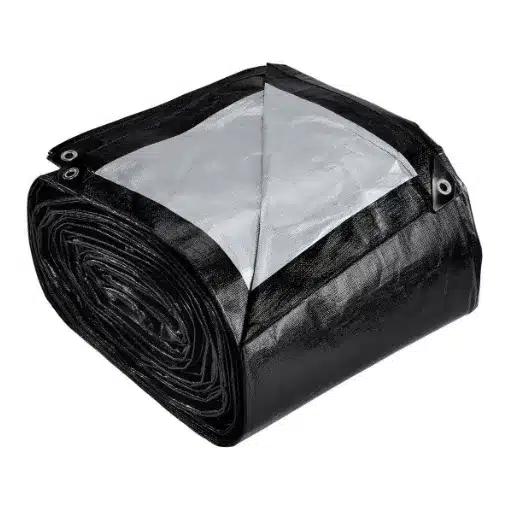
Price Range of Heavy Duty Black Tarps
Prices for heavy-duty black tarps depend on size, quality of the materials used, and various other factors such as UV resistance or waterproof treatment. Based on the latest information obtained from search results of , smaller to medium-sized heavy-duty black tarps (e.g., 6×8 feet up to 10×12 feet) usually go for anything between $15 and $40. Larger sizes of 20×30 feet and above could be anywhere in the vicinity of $50 to $150 and more, especially if the tarp is in premium-grade polyethylene or other sort of comparable heavy and tough materials. With reinforced edges, anti-mildew treatments, lifetime warranties, and so forth, one would expect to pay the upper-tier range, as higher-tier consumers look for value in longevity and high performance.
| Tarp Size | Price Range | Typical Features |
|---|---|---|
| Small to Medium (6×8 to 10×12 feet) |
$15 – $40 | Standard heavy-duty material, basic waterproofing |
| Large (20×30 feet and above) |
$50 – $150+ | Premium-grade materials, reinforced edges, anti-mildew treatments, warranties |
Choosing the Right Size and Weight
Select tarps of proper sizes and weights in accordance with your particular needs. First, assess the dimensions of the area or the object you wish to cover. Recent trending data observed from search results show that queries for popular tarp sizes indicate a general preference for middle-sized tarps like 10×12 feet, which come with somewhat flexible uses for covering furniture, securing outdoor equipment, or even providing temporary shelter.
Weight may be held as the next consideration: heavy-duty tarps are most often searched and needed by individuals in the construction, agricultural, and camping fields as they require materials that will endure severe weather situations and other such highly demanding ambiance. Conversely, lightweight tarps rank highly for consumers who need portability and ease of setup, such as for backyard projects or short-term weatherproofing. Leveraging these insights from emerging trends with your particular project, application, or operation will assist in striking the best-weight-versus-durability compromise.
📏 Quick Sizing Guide
- Popular Size: 10×12 feet – Versatile for furniture, equipment, temporary shelter
- Heavy-Duty Weight: Best for construction, agriculture, camping in severe weather
- Lightweight Options: Ideal for portability, backyard projects, short-term use
Where to Buy Quality Black Tarps
Based on the latest data from ‘s search engine, several quality black tarp marketplaces stand out resembling good choices. Online marketplaces like Amazon, Home Depot, and Lowe’s top the charts, with countless selections covering different weights, materials, and sizes to fit any occasion. During specialized suppliers, companies such as Tarps Plus and MyTarp.com offer heavy-duty solutions for industrial or specific outdoor applications. For those who want to see and buy locally, many hardware/outdoor supply stores carry durable black tarps considered to have professional-grade performance. Comparing reviews, specifications, and customer feedback will help ensure you select a tarp that balances quality with cost effectively.
🛒 Online Marketplaces
Amazon, Home Depot, Lowe’s
🏭 Specialized Suppliers
Tarps Plus, MyTarp.com
🏪 Local Stores
Hardware & Outdoor Supply Stores
Maintenance and Care for Black Tarps
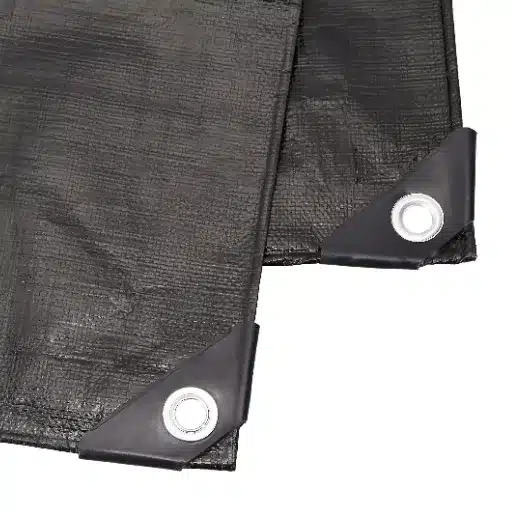
How to Clean Vinyl Tarps
Clean vinyl tarps well to prolong their life and thus maintain their utility. Remove loose debris using a soft broom or brush, keeping abrasive contact at the very least so as not to damage the tarp surface. Prepare a mild soap solution usually made of dishwashing soap diluted in warm water. Harsh chemicals or bleach should be avoided, as they could also eventually weaken vinyl material. With either of a sponge or cloth, gently scrub at stained or very soiled areas of the tarp. Using a garden hose, rinse the tarp thoroughly to reclaim from soap residue of all sorts. Dry the tarp fully by air dry before storing it. Folding away while wet could bring mold or mildew issues, so be sure to insert it into storage when fully dry. These basic cleaning rituals go a long way in ensuring vinyl tarps stay handy and strong for a number of years.
Step-by-Step Cleaning Process
- Remove Debris: Use a soft broom or brush to remove loose debris with minimal abrasive contact
- Prepare Solution: Mix mild dishwashing soap with warm water (avoid harsh chemicals or bleach)
- Scrub Gently: Use a sponge or cloth to gently scrub stained or soiled areas
- Rinse Thoroughly: Use a garden hose to remove all soap residue
- Air Dry Completely: Allow the tarp to dry fully before storage to prevent mold or mildew
Storage Tips to Extend Lifespan
For good storage, thereby ensuring the vinyl tarps maintain their integrity and longevity. Begin folding the tarp fleecily without any sharp crease, for the slight crease might weaken the material over time. Try to keep it in a cool-dry place away from direct sunlight since prolonged exposure to UV rays can degrade the tarp surface. In addition, by putting the tarp inside a storage bag or container, you can safely keep dust, dirt, and pest away from it. Whenever possible, store your tarp away from anything that could harm it, preferably any sharp objects or chemicals. Hence, through proper storage combined with routine cleaning, the life of a vinyl tarp will set a tremendous amount of time.
💡 Essential Storage Tips
- Fold gently without sharp creases to prevent material weakening
- Store in cool, dry places away from direct sunlight
- Use storage bags or containers to protect from dust, dirt, and pests
- Keep away from sharp objects and chemicals
- Combine proper storage with routine cleaning for maximum lifespan
Repairing Less Damage on Tarps
A small amount of damage, such as a small tear or puncture in a vinyl tarp, can be easily repaired with a little elbow grease, good equipment, and proper technique. Begin by thoroughly cleaning the damaged area with soap and water to remove any dirt or debris; this ensures good adhesion for the repair. After drying, sustain the damage using a vinyl tarp repair kit, which typically includes avails of adhesives and patches: cut the patch to just larger than the tear, spread adhesive on the edges, then press it firmly over the damaged area. Allow the patch to cure according to the directions on the container before using the tarp again.
The repair tape is another alternative for smaller holes and tiny punctures. Simply clean and dry the area and then cut the tape to cover the hole; press firmly into place. For larger ruptures, consider having the tarp professionally repaired to guarantee it remains sturdy and waterproof. By regularly inspecting your tarp and attending to minor problems as soon as they emerge, you can prevent further deterioration and greatly extend its life.
🔧 Repair Methods Comparison
Method 1: Vinyl Tarp Repair Kit
- Clean damaged area thoroughly with soap and water
- Dry the area completely
- Cut patch slightly larger than the tear
- Apply adhesive to edges
- Press firmly over damaged area
- Allow to cure per manufacturer’s directions
Method 2: Repair Tape (Small Holes & Punctures)
- Clean and dry the area
- Cut tape to cover the hole
- Press firmly into place
Frequently Asked Questions (FAQ)
❓ What is a heavy duty black tarp made of?
A heavy duty black tarp is usually made of heavy duty polyethylene or vinyl material to ensure superior durability and strength. Such materials are made to be rip- and tear-proof so that the tarp can stand harsh conditions. When buying the tarp, consider its thickness, which is measured in mil; heavier tarps are available in 14 mil or 16 mil thicknesses for better durability. The black heavy duty tarps are sometimes also UV resistant and can be used outdoors in applications such as covering boats, trucks, and lumber.
❓ How do the costs of black tarps compare with tarps of other colors?
The prices of black tarps vary with characteristics such as material and thickness in the same way for other colors. Occasionally, due to their UV-resistant features and durability, black heavy duty tarps might cost a bit more. While sourcing price-wise, also factor in quick shipping options and whether it’s custom-made for certain requirements, mainly for example in covering a trailer or yard. Making that judgment means balancing the cost with quality and the particular needs for your project while ensuring great value.
❓ What are the benefits of using a black tarp for outdoor protection?
Several benefits come with using a black tarp for outdoor protection, mainly because of its heavy duty and UV resistant nature. Black tarps block the sun’s rays and prevent heat build-up, thus protecting the items underneath that require it. The tarps also can restrict weather conditions, since the material is thick and can stand in the open weather. These can be used for covering several things from farm-type equipment to tents or maybe for a temporary fence. Of course, the heavy duty black tarp is versatile and can be used for a variety of other things, shipping, and trucking among them.
❓ Can a black tarp be used for a tent?
Yes, it is possible to effectively use a black tarp as a tent cover, especially if it is heavy duty polyethylene or PVC. These tarps are also waterproof and durable and would best suit outdoor events or camping. When using the tarp as a tent, make sure it is securely anchored; consider using webbing or other supports to reinforce its stability. Heavy duty tarps can be custom-sized, which is handy if you want to tailor the tent fitting to your needs, whether for a backyard sit-down or for an outdoor festival.
❓ What makes for a black tarp to be UV resistant and durable?
A black tarp’s UV-resistant and durable nature is mere application of quality materials used in its making. Polyethylene and vinyl tarps are generally made heavy-duty and undergo several processes in treating to make them withstand harms coming from sunlight and environmental factors. The thickness of the tarp, expressed in mil, is another factor in its strength against wear and tear. Choosing a heavy duty black tarp will ensure a long use life for its various applications from boat covering to outdoor storage, all must withstand long sun exposure and other weather conditions.
📚 Reference Sources
Reusable Black Tarps Suppress Weeds and Make Organic Reduced Tillage More Viable
Source: Cornell University
Discusses the use of black tarps in organic farming to suppress weeds, decompose crop residue, and preserve soil health.
Using the Sun to Kill Weeds and Prepare Garden Plots
Source: University of Minnesota Extension
Explains the process of using tarps for soil solarization and weed control.
Tarping in the Northeast: Types of Tarps and How They Work
Source: University of Maine Extension
Provides insights into the use of black tarps for soil temperature management and weed suppression.

